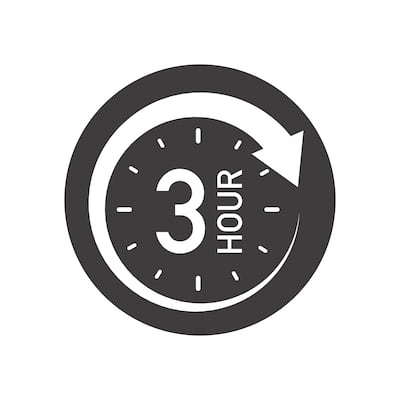
On most occasions, I am any other fool – but for The Irish Times, I am reporting on my journey towards completing a marathon in three hours, in my hometown of Belfast, on May 1st.
The other day, I warmed up for another brisk workout, passing the village pub as I did so. A man with a wicker basket of grey hair burst out of its door, straightening his arm to brandish a crisp, new cigarette. Bringing fingers and fag to lips he readied himself for that imminent, sweet drag. Before he could make it, the glint in his eye bounced off my fluorescent running T-shirt causing him to look up, delay his nicotine high, and prod a fingertip in my direction.
“I used to be like you!” he said, followed by a crackled guffaw, before finally sucking the tip of the tobacco tube; a yellowed grin rising through fresh smoke.
After a polite laugh, I run on – maybe a bit faster – but I also think . . .
Like me? What does he mean, "like me"?
When our guffawing smoker saw me, I was worrying about whether I had tied my shoelaces properly, as the tops of my feet like to tease me with thoughts of tendonitis if I don’t. That niggle in my left hip, has it disappeared yet? Have I worked on it enough? When did I last eat? When did I last drink? How well did I sleep last night?
For me, training for something is like being in a record booth: all I can hear are the instruments that can either help me or hinder me in getting to that goal. This headspace allows me to motivate myself, fully focus, but it can also lead down a trail of obsession and anxiety and self-loathing.
Although many questions still fill my head, I am aware, and appreciate, that most of them can be boiled down to . . . Are you okay? Are you taking care of yourself? . . . And answering no if I need to, is okay.
No wasn’t an option I availed of in the past. Yes was the goal, and the goal was God: an unforgiving, dictatorial God at that. If it said to “jump into the fire” on my training plan, I was flying into the flames, caped in a fire blanket. Approaching targets with masochistic gusto got the job done; but giving myself to my ambitions often left more of me being taken away.
Through crying, chats, and counselling – in no particular order – I’ve worked on charging towards hopes and dreams in a more sustainable way. Although the goal of getting to the Belfast Marathon is to clock twenty-six 6’52” miles in a row, I’m now more in love with the process of getting to that attempt, and how it encourages me to listen to my body more, leading to a physically and mentally healthier me.
One aspect I have focussed on is ensuring my body bends where it’s supposed to and work on places where it’s supposed to, but doesn’t. It’s been a slow-burnt labour of love, but now I am proud to say it’s become a meditative habit for starting and finishing days.
Enlightening more around the subject, I spoke to movement messiah Tom Morrison.
“When I first started training, I had no idea how important mobility work was. I lasted a few years then I started to ache all over and picked up every injury you could think of, until I finally damaged two discs in my lumbar spine and couldn’t walk, stand, or sit without pain. It was one of the worst experiences of my life. I decided that there needed to be some sort of framework for people to use in order to check their flexibility and stability in a simple way, and that’s where the Simplistic Mobility Method came from.”
The method was my gateway to a realisation that fitness isn’t just being able to run to the shops, it’s being able to bend down and tie your shoelaces before you open the front door. Instead of thinking I would always have a sore hip, chicken-breasted posture, and wonky shoulders; educating myself on strength reassured me that everything is temporary, and as Tom says himself, “it is scary that people can end up not moving for 10-20 years or more because of one bit of bad advice”.
While I had Tom, I asked him, for the sole benefit of Irish Times readers rather than my own personal plight, to run a three-hour marathon – three things that runners should pay attention to as they train for their big day in the city. Here they are (with witty headings included by yours truly).
You can’t run with two left feet
“Foot strength is crucial for long-distance running. If you have weak feet, you are going to rattle your bones which will lead your ankles, knees and hips to eventually start to hate you.”
Mobility is hip
“Overall hip mobility will ensure you have a good stride and use the right muscles when running, rather than falling forward and slapping your foot into the ground to not fall.”
Running on a tightrope
“Devoting time to work on your balance every day will give you better stability, again helping your body to cope with longer distances and pushing your endurance. The best injury is the one that never happens because you already did the rehab work before a weakness could become a problem.”
Words to live by, from Tom Morrison.
- Until our next meeting in two week, we encourage you to love yourself a bit more, listen to yourself a lot more and reassure you that simple steps are always in sight for any physical or mental niggle that befalls upon you.













